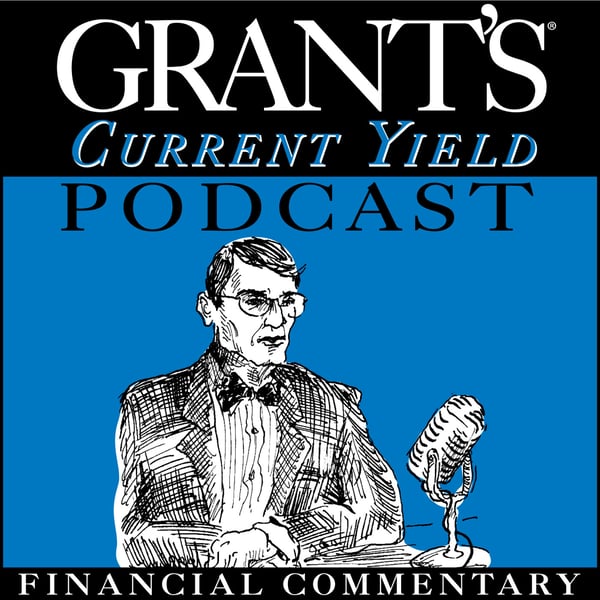SMALL CAP HUNTING
Grant’s Current Yield Podcast
Grant's Financial Publishing, INc.
4.6 • 693 Ratings
🗓️ 13 April 2023
⏱️ 34 minutes
🧾️ Download transcript
Summary
With special guest Eric Cinnamond, co-founder of Palm Valley Capital Management.
Transcript
Click on a timestamp to play from that location
| 0:00.0 | Well, this is current yield grants interest rate observer of the air. |
| 0:10.2 | I'm Jim Grant, and with me as always is Evan Lorenz, the great deputy editor of grants. |
| 0:15.8 | We are going to talk today with Eric Sinamon, and I am persuaded that we will be recording because Henry |
| 0:23.7 | is at the controls, as usual, and all things are set to go. So, Evan, I want to begin by observing |
| 0:29.5 | to you that the Wall Street Journal appears to have bugged offices of Grant's Interest Rate |
| 0:35.3 | Observer. And I say this because this morning, the Wall |
| 0:37.6 | Street Journal published something that you yourself wrote last evening. If flattery is the |
| 0:42.6 | sincere form of imitation, or if imitations, the sincerest form of flattery, they gave us a great |
| 0:46.9 | compliment. Yeah. Well, tell our, tell our listeners what they copied and, and what legal |
| 0:52.3 | steps we are taking to have this happened and going. |
| 0:55.3 | Well, I think we're in line to Sue Burt-Mardek after some other prominent figures in |
| 0:59.5 | America. The story is essentially the Fed is actually controlling interest rates through a facility |
| 1:05.0 | that actually exacerbates bank runs. So prior to the housing bust in 2007 through 2009, the Fed would actually nudge |
| 1:13.7 | interest rates by buying or selling short-term treasuries in order to impact the rate that |
| 1:17.7 | banks would lend their excess reserves to one another, either up or down. This worked well in |
| 1:22.0 | the decade ending 2007 when excess reserves averaged $1.7 billion with a B. However, this system broke down over the course of easy monetary policy, and by 2013, |
| 1:33.7 | when the Fed was in the midst of its third round of quantitative easing, excess reserves, |
| 1:37.2 | you know, topped $2 trillion. |
| 1:39.2 | So the Fed introduced the RRP or the reverse repurchase facility. |
| 1:43.9 | In the RRP, the Fed actually borrows against |
| 1:46.8 | its gargantuan securities portfolio in order to set a floor under rates. The idea being, if you're |
| 1:53.3 | a money market fund and you can actually lend to the Fed, which has a printing press and therefore |
... |
Please login to see the full transcript.
Disclaimer: The podcast and artwork embedded on this page are from Grant's Financial Publishing, INc., and are the property of its owner and not affiliated with or endorsed by Tapesearch.
Generated transcripts are the property of Grant's Financial Publishing, INc. and are distributed freely under the Fair Use doctrine. Transcripts generated by Tapesearch are not guaranteed to be accurate.
Copyright © Tapesearch 2025.

